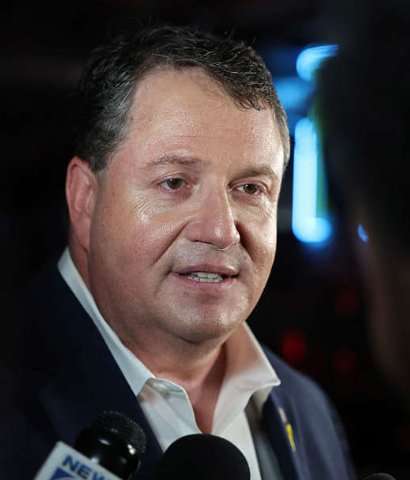Weather Guard Lightning Tech

The Wind Industry Remains Resilient
This episode covers how the wind industry is adapting to political and regulatory challenges, from Ørsted’s legal battle to restart Revolution Wind to a wind executive preparing to row across the Atlantic for ocean conservation.
Sign up now for Uptime Tech News, our weekly email update on all things wind technology. This episode is sponsored by Weather Guard Lightning Tech. Learn more about Weather Guard’s StrikeTape Wind Turbine LPS retrofit. Follow the show on Facebook, YouTube, Twitter, Linkedin and visit Weather Guard on the web. And subscribe to Rosemary Barnes’ YouTube channel here. Have a question we can answer on the show? Email us!
There’s something fascinating happening in the world of wind power right now. Something that tells us less about the technology itself, and more about human determination.
You know the story – Danish energy giant Ørsted the world’s largest offshore wind developer – spent five billion dollars building the Revolution Wind project off the coast of Rhode Island. Eighty percent complete. Three hundred and fifty thousand homes depending on the electricity.
Then, one August morning, the phone rings – The new administration says: “Stop. Everything. Now.”
Just like that, Orsted is losing a reported two million dollars every single day the turbines sit idle.
Last Monday, federal judge Royce Lamberth looked at the government’s reasoning and said – and I quote – “There is no question in my mind of irreparable harm.” He ordered work to resume immediately.
Ørsted’s stock jumped. The workers went back to their jobs. The turbines will spin again.
Meanwhile, President Trump’s “One Big Beautiful Bill Act” has triggered something nobody saw coming: the great wind energy consolidation.
Clean energy deals jumped from seven billion dollars to thirty-four billion dollars in just six months.
Companies like Agilitas Energy are swooping in, buying up distressed assets from companies that may struggle with the new reality.
As Barrett Bilotta from Agilitas put it: “We are on the buy side.”
Across the Atlantic, let’s talk about France. Now, you might think the French would be leading the offshore wind revolution. After all, they’ve got coastline, they’ve got technology, they’ve got TotalEnergies.
But you’d be wrong.
Patrick Pouyanne, TotalEnergies’ chief executive, put it bluntly this week: “It’s hell to invest in France for regulatory reasons.”
Get this – it takes two and a half to three years just to bid on offshore wind projects in France. In Germany, Pouyanne can get permits twice as fast.
“I don’t understand,” Pouyanne said, “why we’re able to renovate Notre Dame Cathedral in five years and unable to build solar or wind plants at the same pace.”
And yet – here’s the kicker – even as he criticized his home country, TotalEnergies just won the contract for France’s largest offshore wind farm ever. One and a half gigawatts off the coast of Normandy.
But here’s where the story gets interesting. While France stumbles with red tape, parts of North America is waking up.
Up in Nova Scotia, Minister Sean Fraser announced this week that Canada is moving full steam ahead with offshore wind development. They’re calling it part of a sixty billion dollar opportunity.
The Canadians are doing something smart: they’re learning from everyone else’s mistakes. Streamlined processes. Clear timelines.
So what does all this tell us?
It tells us that wind energy isn’t just about technology anymore. It’s about adaptation. It’s about resilience. It’s about knowing when to fight and when to pivot.
Ørsted fought in court – and won. TotalEnergies called out France’s bureaucracy – while quietly building their biggest offshore wind farm ever. Canada saw opportunity in others’ uncertainty.
And the smart money? It’s buying up assets while they’re cheap, knowing that the wind is a long-term investment.
Speaking of people who understand resilience, let me tell you about Stacey Rivers. She’s the Chief Innovation Officer at BladeBug – a company that builds robotics for NDT inspectinos of offshore wind turbines.
In seventy-five days, Stacey and her teammates Jonno Hammond and Emma Wolstenholme will do something extraordinary. They’ll row three thousand miles across the Atlantic Ocean in the World’s Toughest Row.
Why would a successful wind energy executive attempt something so dangerous? Because she believes the ocean is calling for help.
“This journey is more than just a test of endurance,” Stacey says. “It’s a powerful platform to champion ocean conservation and sustainable innovation.”
Every stroke across the Atlantic will raise awareness for a zero-carbon future – the same future that offshore wind farms are helping to build.
If you’d like to support their mission, visit www.calltoearth.co.uk.
You see, there’s something about human nature: we adapt. We overcome. We find a way.
The wind energy industry is learning that lesson right now. Some companies will fall. Some will consolidate. Some will pivot to friendlier markets.
But the wind… the wind keeps blowing.
Off the coast of Rhode Island, those Revolution Wind turbines are spinning again. In Britain, massive wind farms continue to rise from the sea. Canada is planning its offshore future. And somewhere, a smart investor is buying tomorrow’s energy infrastructure at today’s distressed prices.
Meanwhile, people like Stacey Rivers are literally rowing toward that sustainable future, one stroke at a time.
The storm will pass. The wind remains. And human determination will carry us forward.
That’s the story of resilience in renewable energy.
https://weatherguardwind.com/wind-industry-resilient/
Renewable Energy
Trump’s Third Term
 From MSN:
From MSN:
Representative Randy Fine (R-FL) has sparked controversy by advocating for the repeal of the 22nd Amendment, which limits U.S. presidents to two terms, citing President Donald Trump’s role in brokering a Gaza peace agreement as justification for extending his presidency. A bipartisan coalition of lawmakers introduced a resolution denouncing Fine’s proposal as a danger to democratic norms, escalating the debate. Amending the Constitution would require a two-thirds vote in Congress and ratification by three-quarters of state legislatures, a formidable hurdle.
Is this a joke? Congressional Republican Trump sycophant is suggesting that the president’s bid for a third term should be done legally, even though the last few years have brought a nonstop onslaught of grossly illegal acts: the storming of the Capitol, numerous other attempts to overthrow the U.S. federal government by overturning the 2020 election, stealing top-secret government documents, an adjudicated rape, the 34 counts of business fraud on which Trump was convicted, current-day violations of posse comitatus, the execution of unconvicted Venezuelan people on ocean-going ships, and the bulldozing the East Wing of the White House.
The man’s life is one big, ongoing crime; let’s be honest here.
Renewable Energy
How Should the Measles/Mumps/Rubella Vaccine Be Administered? Should You Ask a High School Baseball Coach?
 There are so many things going wrong in this country simultaneously that it’s hard to list them all.
There are so many things going wrong in this country simultaneously that it’s hard to list them all.
Here’s something that no one could have seen coming: (see short video here) crackpot politicians giving parents insane medical advice about how to care for their children.
If I told you that our country’s parents were making decisions on vaccinating their children based on information provided by figure skaters or lawn mower salesmen, you wouldn’t believe me.
But the case is actually worse; it’s coming from the White House.
Renewable Energy
Do Americans Approve of Our Country’s Execution of Innocent People?
 In this short video on the bombing of ships leaving Venezuela, President Trump asserts that drug overdoses took like lives of more than 350,000 people last year, a figure that, according to the CDC, is actually 79,383.
In this short video on the bombing of ships leaving Venezuela, President Trump asserts that drug overdoses took like lives of more than 350,000 people last year, a figure that, according to the CDC, is actually 79,383.
In any case, the video fails to mention that executing people who have not been charged with and convicted of a crime is a violation of both domestic and international law.
Do Americans Approve of Our Country’s Execution of Innocent People?
-
Climate Change2 years ago
Spanish-language misinformation on renewable energy spreads online, report shows
-
Climate Change3 months ago
Guest post: Why China is still building new coal – and when it might stop
-
Climate Change Videos2 years ago
The toxic gas flares fuelling Nigeria’s climate change – BBC News
-

 Greenhouse Gases1 year ago
Greenhouse Gases1 year ago嘉宾来稿:满足中国增长的用电需求 光伏加储能“比新建煤电更实惠”
-
Greenhouse Gases3 months ago
Guest post: Why China is still building new coal – and when it might stop
-

 Climate Change1 year ago
Climate Change1 year ago嘉宾来稿:满足中国增长的用电需求 光伏加储能“比新建煤电更实惠”
-

 Carbon Footprint2 years ago
Carbon Footprint2 years agoUS SEC’s Climate Disclosure Rules Spur Renewed Interest in Carbon Credits
-
Renewable Energy4 months ago
US Grid Strain, Possible Allete Sale



